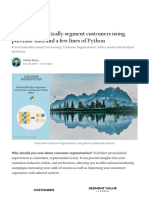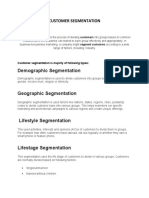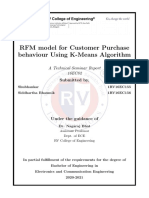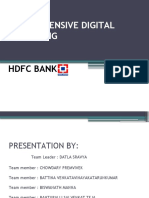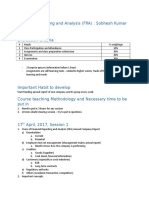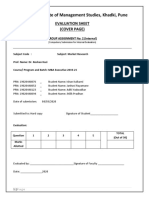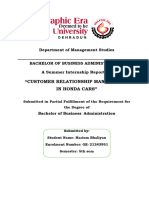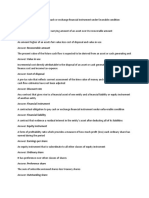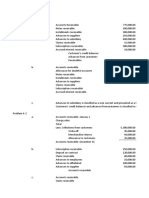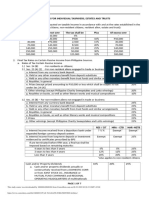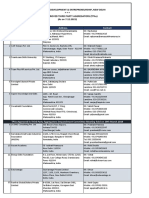0% found this document useful (0 votes)
367 views3 pagesCustomer Segmentation With RFM Analysis
The document discusses customer segmentation using RFM (Recency, Frequency, Monetary) analysis. RFM analysis scores customers based on their recent purchase (Recency), how often they purchase (Frequency), and how much they spend (Monetary). These scores are used to segment customers into groups and develop targeted marketing strategies. For example, focusing on getting lapsed customers who haven't purchased in a long time (low Recency score) to make another purchase. RFM analysis provides insight into a customer's lifetime value and helps companies improve customer retention and acquisition.
Uploaded by
satishjb29Copyright
© © All Rights Reserved
We take content rights seriously. If you suspect this is your content, claim it here.
Available Formats
Download as DOCX, PDF, TXT or read online on Scribd
0% found this document useful (0 votes)
367 views3 pagesCustomer Segmentation With RFM Analysis
The document discusses customer segmentation using RFM (Recency, Frequency, Monetary) analysis. RFM analysis scores customers based on their recent purchase (Recency), how often they purchase (Frequency), and how much they spend (Monetary). These scores are used to segment customers into groups and develop targeted marketing strategies. For example, focusing on getting lapsed customers who haven't purchased in a long time (low Recency score) to make another purchase. RFM analysis provides insight into a customer's lifetime value and helps companies improve customer retention and acquisition.
Uploaded by
satishjb29Copyright
© © All Rights Reserved
We take content rights seriously. If you suspect this is your content, claim it here.
Available Formats
Download as DOCX, PDF, TXT or read online on Scribd
/ 3


